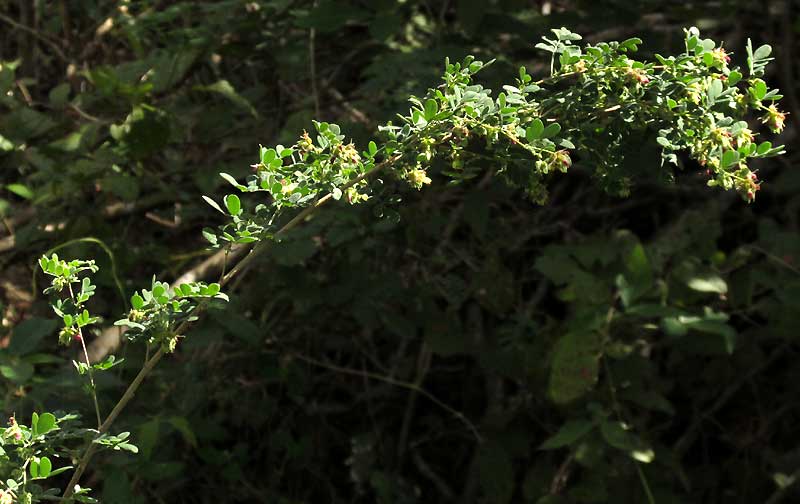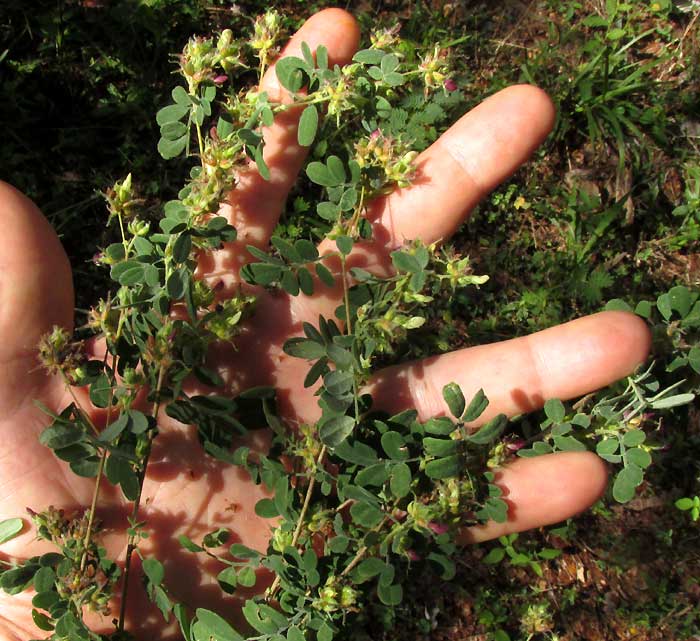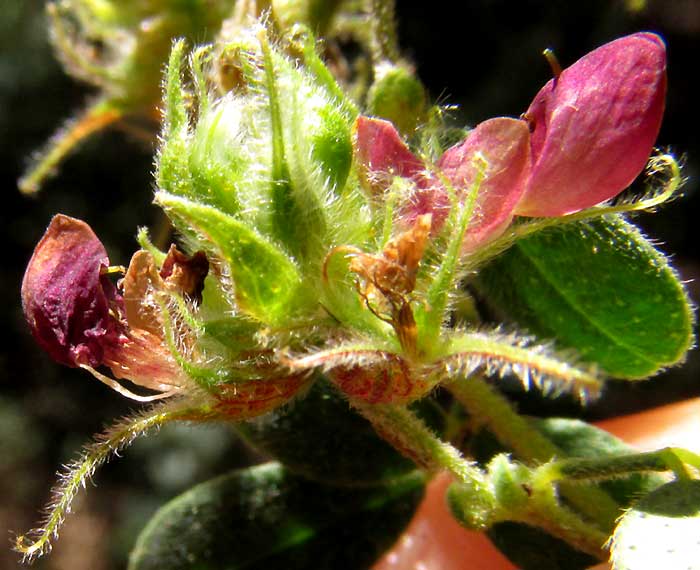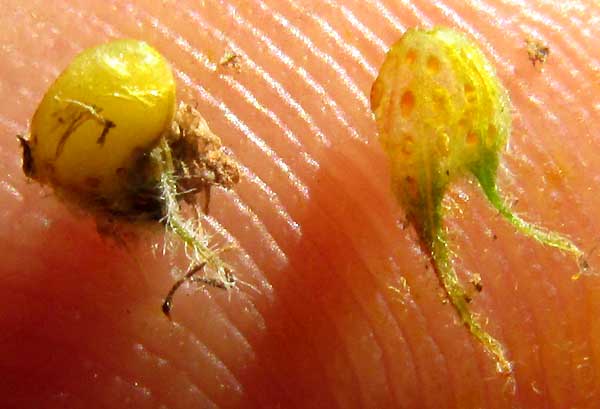Excerpts from Jim Conrad's
Naturalist Newsletter
from the February 8, 2019 Newsletter issued from Rancho Regensis north of Valladolid, Yucatán, MÉXICO;
elevation ~40m (~130 ft), N~20.876°, W~88.170°
LOW PRAIRIE-CLOVER FLOWERING
At the weedy edge of a clearing below the hut a belly-high plant bearing lots of tiny flowers crammed together in numerous short, dense, spike-type flowering heads turned up, shown below:

The small, pinnately compound leaves were typical of the Bean Family, though they were unusually hairy and their surfaces were oddly warty-surfaced, as you can see below:

The Bean Family must be our best represented family of flowering plants here, and a lot of the Bean Family's species bear pinnately compound leaves, though the leaflets' surfaces so rough with tiny warts was something a little special. Also a little unusual were this plant's flowering heads, which were uncommonly small and congested, giving the plant something of a messy look, as shown below:

Up close, the individual flowers confirmed the plant's membership in the Bean Family, though the blossoms were so small that it was hard to discern their bean-type or "papilionaceous" structure. Below, you can see that the flowers' corollas were pinkish and the calyx's sepals were strikingly long, slender and hairy:

Breaking apart a mature, withered calyx in the hope of finding a fruit, I exposed the items shown on the tip of my finger, seen below:

The minuscule, one-seeded legume-type fruit -- or maybe the seed itself with the husk removed -- is shown at the left, while a piece of the calyx with its slender, hairy sepals and glandular surface appears at the right.
Glandular herbage, pinnately compound leaves, long, hair-like sepals that themselves are very hairy, along with the plant's small, congested clusters of very small flowers... That's a combination of features we've seen before, up in Texas, though on very different plants. Those dry-grassland loving herbs were the Golden Prairie-clover and the Dwarf Prairie-clover. Remembering that, I suspected that here we had another prairy-clover species, a member of the genus Dalea.
In the Yucatan we have two Dalea species, and our weedy plant is one of them. It's DALEA SCANDENS, in English known as the Low Prairie-clover. the plant bears an English name because it occurs from Texas to southern Mexico, and in the Caribbean.
I enjoy finding new species of kinds of plants I'm already familiar with -- the "variations on a theme" thing -- and Mexico is the best place on Earth to find variations on the prairie-clover theme. Some 165 species of the genus Dalea are recognized, all restricted to the Americas, and nearly half of the species are endemic to Mexico. Mexico appears to be their center of diversity.